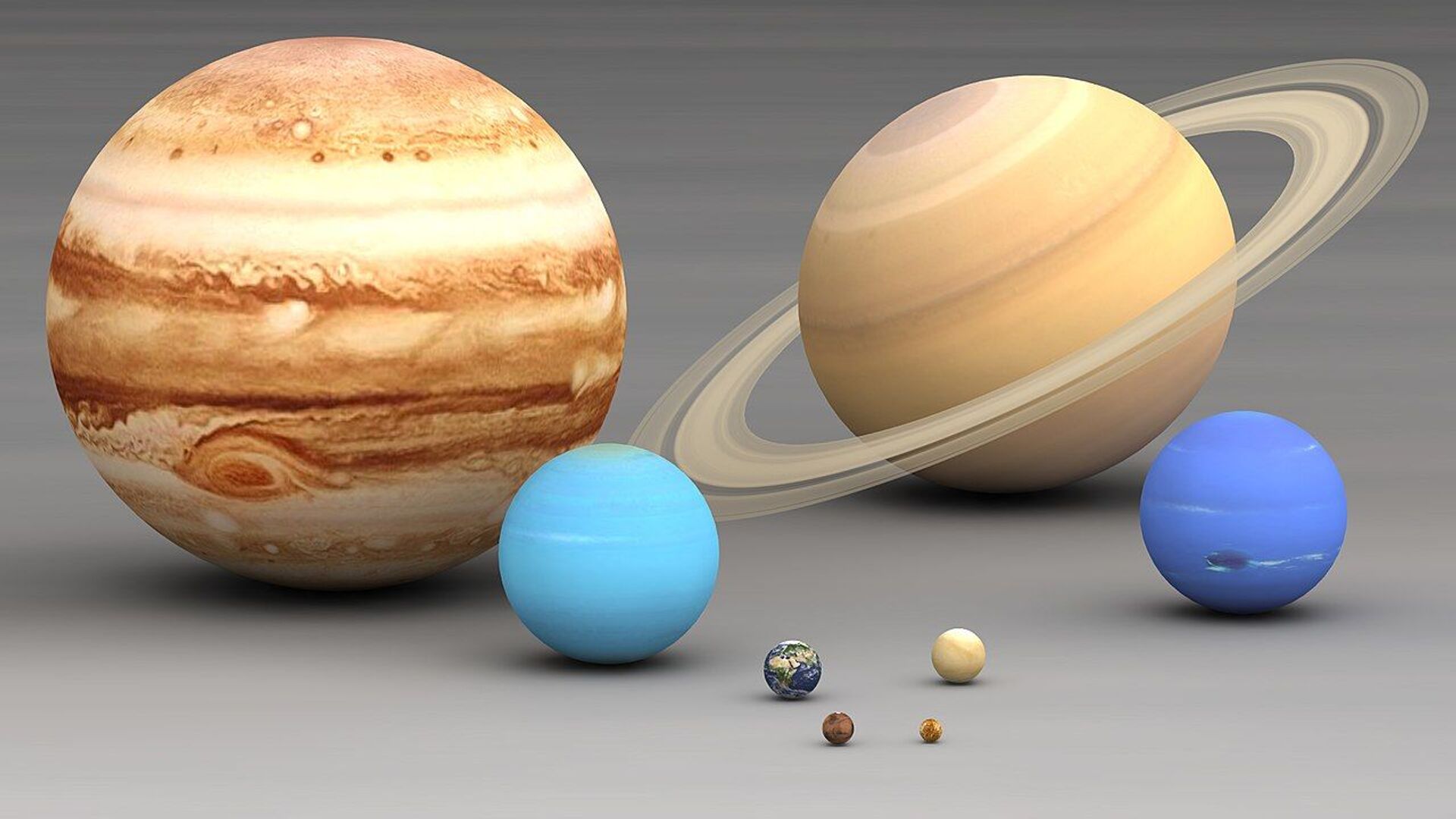New Study Reveals Why Neptune is a Deeper Blue Than Uranus

© Photo : NASA
Subscribe
The two outermost planets in the solar system, Uranus and Neptune, have a great deal in common. However, one notable feature is their different hues of blue in their appearance from space. Now, scientists believe they can explain the discrepancy.
According to a study published in the Journal of Geophysical Research: Planets, the difference essentially boils down to haze. Both planets have a layer of thick, concentrated haze in their gaseous atmospheres, but on Uranus, this layer is more persistent, “whitening” its appearance from space and giving it a brighter cyan appearance.
On Neptune, violent storms churn up the atmosphere more than on Uranus, which causes this hazy layer to condense into liquid methane storms, clearing away the haze as it falls toward the planet. The calmer Uranus, which appears featureless from space, has no such dynamic.
If that layer of haze did not exist, they said, both planets would be an identical shade of deep blue caused by clouds of methane and hydrogen sulfide ices.

Solar system planets size comparison. Largest to smallest are pictured left to right, top to bottom: Jupiter, Saturn, Uranus, Neptune, Earth, Venus, Mars, Mercury
The scientists explained that they determined this by looking at both planets using multiple light wavelengths observed via the Gemini Observatory in Hawaii.
“This is the first model to simultaneously fit observations of reflected sunlight from ultraviolet to near-infrared wavelengths,” Patrick Irwin, professor of Planetary Physics at Oxford University and lead author of the paper, told NASA for a Tuesday news report. “It’s also the first to explain the difference in visible color between Uranus and Neptune.”
Neptune and Uranus are both called “ice giants” because while they share a hydrogen and helium atmosphere and lack of solid surface with their larger cousins, Jupiter and Saturn, they also have large amounts of water, methane, ammonia, and other chemicals. They are also much colder, with Uranus having the coldest atmospheric temperature of any planet in the solar system: negative 221 degrees Celsius.
Nonetheless, at their cores, they are extremely hot, and the immense pressure is known to crush carbon into diamonds, which rain down on their rocky core.
Because of their extreme distance from Earth, only the Voyager 2 space probe has visited them up-close, all other studies have been conducted from afar, either here on Earth or in Earth orbit. Neither planet was observed by premodern starwatchers, being too far and too dim to be seen by the naked eye when viewed from Earth; only the invention of telescopes made their discovery in the 18th and 19th centuries possible.
